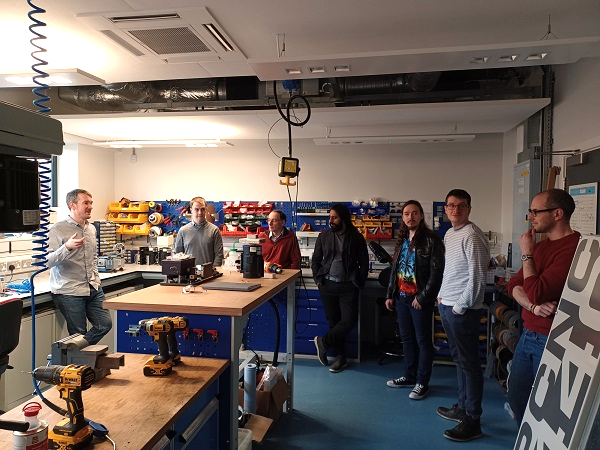York chemists receive funding for new FAAM Airborne Laboratory instruments
Technical specialists from the Wolfson Atmospheric Chemistry Laboratories in the Department of Chemistry at the University of York have been successful in funding applications for two new science instrument projects for the Facility for Airborne Atmospheric Measurements (FAAM) Airbourne Laboratory.

The FAAM Airborne Laboratory is a world-class research facility dedicated to the advancement of atmospheric science, managed by the National Centre for Atmospheric Science. The aircraft is specially adapted and managed by a team of scientists, engineers, flight technicians and project managers who provide a complete package of support for the scientific community. The Mid-Life Upgrade (MLU) Programme aims to deliver a range of upgrades and enhancements to the aircraft, its measurement capabilities, and its research impact, extending its useful life to 2040.
Dr Pete Edwards and Dr Stephen Andrews from the Wolfson Atmospheric Chemistry Laboratories (WACL) in the Department of Chemistry applied for funding to support the work of the MLU Programme in relation to this upgrade and were awarded a combined budget of nearly £2 million.
The first project, Laser-based Observer of Key Inorganics (LOKI) is managed by Dr Pete Edwards and will provide new capability to detect critical gas phase compounds with the potential for significant improvements in understanding air quality and climate. This state-of-the-art instrument will allow gas concentrations and flux measurements in remote and clean environments from the air to be monitored. The use of new laser technologies will mean that LOKI will be able to measure gases at the single, or even sub, part per trillion mixing ratio at high time resolution. This sensitivity will be particularly important in the transition to net-zero and ensuring that emissions such as sulfur dioxide and nitrogen oxides fall.
The second, more recently awarded grant is towards the Trace Halogenated Organics archiver (THOr). This instrument is led by Dr Stephen Andrews and is a fast gas chromatograph and high resolution time-of-flight mass spectrometer. It will offer high-frequency and high-resolution measurements across a range of volatile organic compounds, providing a historical archive for retrospective analyses of as-yet-unidentified species. THOr accurately quantifies key components for monitoring of primary pollution, tropospheric ozone production and secondary organic aerosol formation. It can also measure halogenated gases affecting stratospheric ozone and identify unknown pollutants from accidental or deliberate release.
These two new upgraded instruments will support the MLU in producing world-leading atmospheric science and research outputs. Staff from the MLU team visited the WACL laboratories this month to meet with members of the project teams and to start discussions around the integration and installation of both LOKI and THOr instruments to the aircraft. There was also an opportunity to assess the resources York needs to deliver the projects effectively, and see the specialist labs and tools they have onsite to support them in delivering these.
“LOKI and THOr are just two of the initial batch of new instrument capabilities that will be delivered through the MLU Programme for the FAAM Airborne Laboratory,” says MLU Project Manager Ed Andrews. “These projects represent a step-change in measurement capability in their respective fields and will be well supported by the team at WACL in their delivery and subsequent operation. There are already plans to utilise both of these instruments as part of upcoming FAAM campaigns and these will help to optimise their use. These capabilities will be fully available for use as part of FAAM from 2025 and any parties interested in utilising them can get in touch with either the team at WACL or FAAM for more information.”
To find out more about the Mid-Life Upgrade, visit the FAAM website.